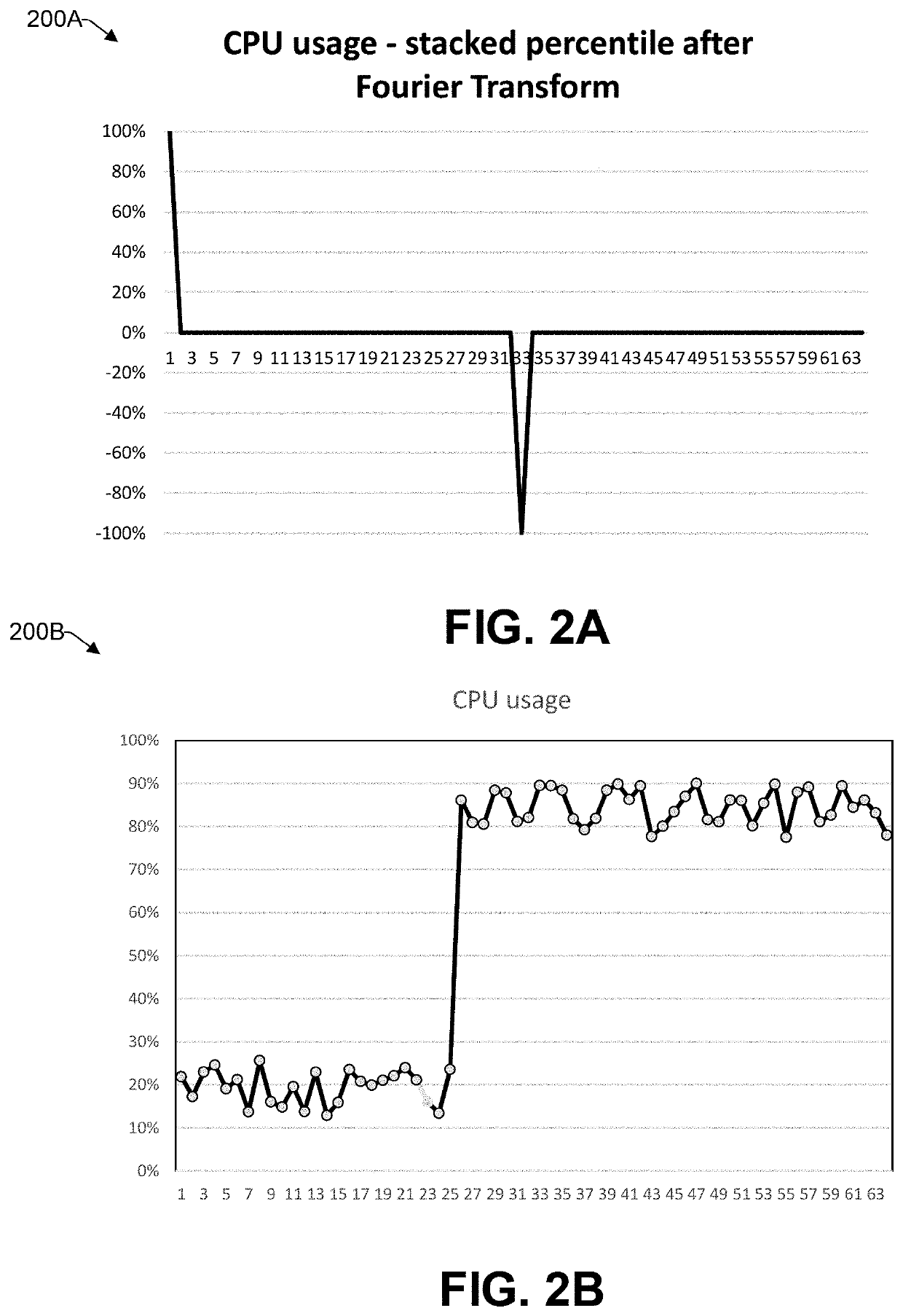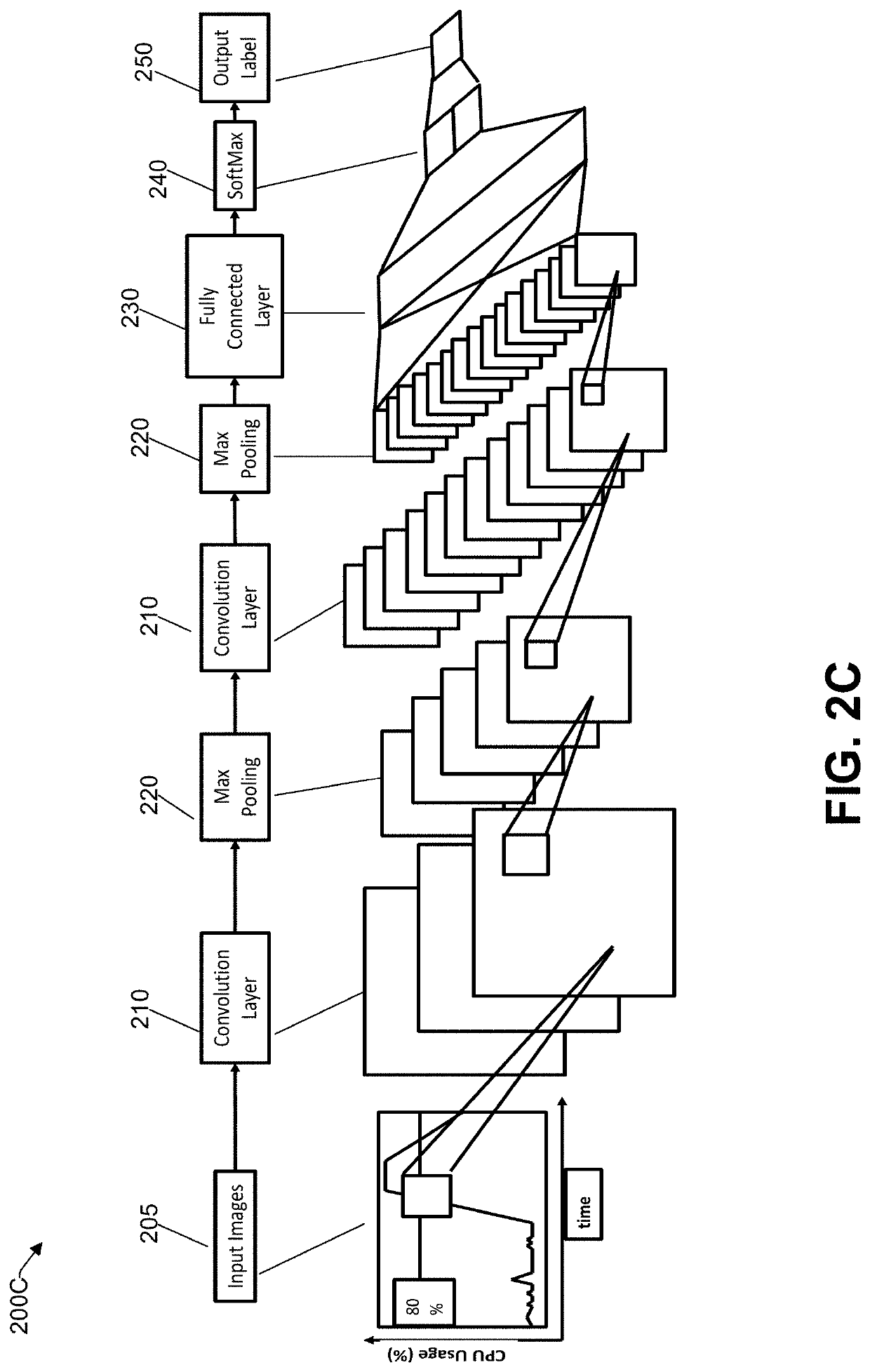Assessing technical risk in information technology service management using visual pattern recognition
a technology of information technology service management and risk assessment, applied in the field of pattern recognition, can solve problems such as adversely affecting operations and running processes
- Summary
- Abstract
- Description
- Claims
- Application Information
AI Technical Summary
Benefits of technology
Problems solved by technology
Method used
Image
Examples
example architecture
[0031]FIG. 1 illustrates an example architecture 100 of a computing system configured to assess technical risk consistent with an illustrative embodiment. In an illustrative embodiment, the computing system is an IT service management system, and risk assessment is performed in real time utilizing operational data. For example, an IT service management system having the example architecture 100 shown in FIG. 1 can provide proactive issue prediction in addition to, or place of, reactive monitoring. However, it is to be understood that the teachings of the present disclosure and the practice of the appended claims are not limited to IT service management and can be applied across other domains.
[0032]A database 105 stores operational data regarding, for example, CPU usage, memory usage, incident tickets, user requests, automatically generated requests, etc. In one example, the CPU usage and memory usage can be expressed as overall percentages of use relative to capacity. In another exa...
example process
[0063]With the foregoing overview of the example architecture 100, it may be helpful now to consider a high-level discussion of example processes. To that end, FIG. 7 presents an illustrative process related to various aspects of assessing technical risk utilizing visual pattern recognition. Process 700 is illustrated as a collection of blocks in a logical flowchart, which represent a sequence of operations that can be implemented in hardware, software, or a combination thereof. In the context of software, the blocks represent computer-executable instructions that, when executed by one or more processors, perform the recited operations. Generally, computer-executable instructions may include routines, programs, objects, components, data structures, and the like that perform functions or implement abstract data types. The order in which the operations are described is not intended to be construed as a limitation, and any number of the described blocks can be combined in any order and...
example cloud
Platform
[0077]As discussed above, functions relating to performing technical risk assessment using visual recognition may include a cloud 900 (see FIG. 9). It is to be understood that although this disclosure includes a detailed description on cloud computing, implementation of the teachings recited herein are not limited to a cloud computing environment. Rather, embodiments of the present disclosure are capable of being implemented in conjunction with any other type of computing environment now known or later developed.
[0078]Cloud computing is a model of service delivery for enabling convenient, on-demand network access to a shared pool of configurable computing resources (e.g., networks, network bandwidth, servers, processing, memory, storage, applications, virtual machines, and services) that can be rapidly provisioned and released with minimal management effort or interaction with a provider of the service. This cloud model may include at least five characteristics, at least thr...
PUM
 Login to View More
Login to View More Abstract
Description
Claims
Application Information
 Login to View More
Login to View More - R&D
- Intellectual Property
- Life Sciences
- Materials
- Tech Scout
- Unparalleled Data Quality
- Higher Quality Content
- 60% Fewer Hallucinations
Browse by: Latest US Patents, China's latest patents, Technical Efficacy Thesaurus, Application Domain, Technology Topic, Popular Technical Reports.
© 2025 PatSnap. All rights reserved.Legal|Privacy policy|Modern Slavery Act Transparency Statement|Sitemap|About US| Contact US: help@patsnap.com



